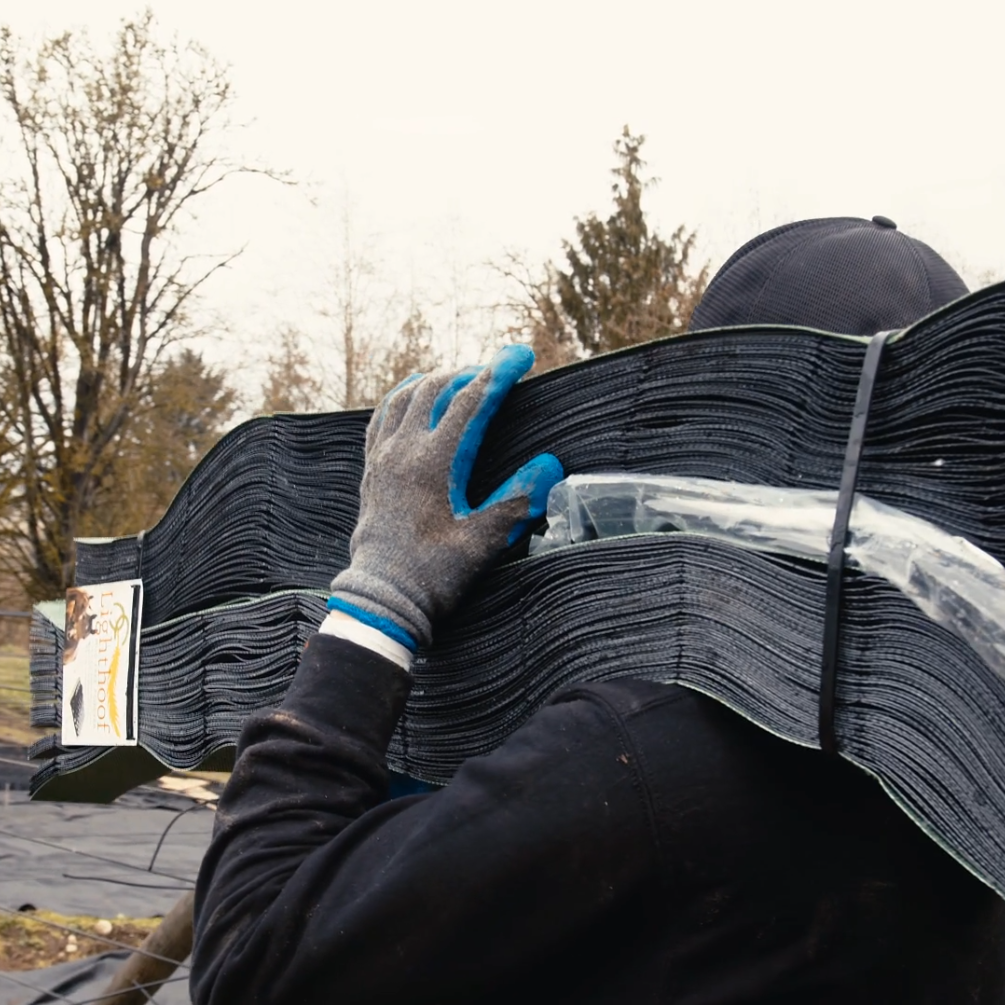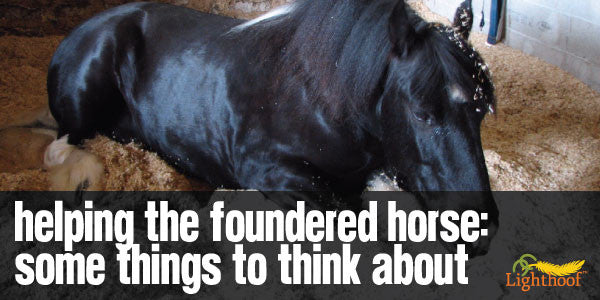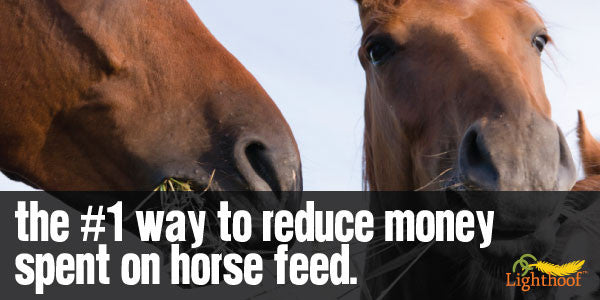Laminitis, also known as founder, is a serious yet very manageable condition that can affect all horses, but is most common in ponies and “easy keeping” breeds. This painful disease compromises the essential shock-absorbing tissues in a horse’s feet. It progresses from tenderness to terrible pain, and in some severe cases can be fatal. You’ve probably heard the adage “no hoof, no horse.”
Sugars and starches are the root of the problem.
The most common cause of laminitis is over-feeding or too much access to sugars and starches, also known as soluble carbohydrates. There are several sources for soluble carbs, but the most common in founder cases are fresh spring grasses. Our equine friends love that green grass!
But too much fresh grass, with high levels of soluble carbs, can cause metabolic changes in your horse. These changes can result in altered blood flow to the essential tissues of the foot, which spells pain and suffering for your pony.
Some equines are at greater risk than others. But laminitis CAN be prevented. Here are great links to info about the causes and treatment of laminitis:
Make a healthy, founder-friendly paddock.
Just about every vet prescribes a low-starch, low-sugar diet for laminitis prevention. And this means limiting your horse’s grass intake. In some cases your vet will tell you that just a few hours per day grazing on fresh grass is okay, while other horses need to be pulled off of pasture entirely. But this doesn’t mean you have to lock her in her stall or banish her to a muddy outdoor confinement area! Provide your equine pal with a grass-free, dry place where she can move around safely and keep blood circulating in her limbs. If she’s used to being out with a herd, build the dry paddock inside or alongside the pasture where the other horses are. Lighthoof is an ideal solution for a safe and healthy laminitis prevention playground! A foundation layer of landscaping cloth keeps grass and clover from growing through the footing. And of course, the Lighthoof base ensures a mud-free paddock for years. Because the last thing you want is for her to develop mud-related diseases while she is trying to heal from laminitis.
The key to survival and recovery is to catch it early.
Your horse’s chances of surviving laminitis are far greater the earlier you identify and treat it. Know the early signs of the disease:
- Tenderness moving on hard surfaces, especially in for forelegs
- Reluctance to move
- The telltale “founder stance” with an unusual amount of weight on the hind limbs (shown below)
- Heat in the hoof wall
 If you suspect your horse has laminitis, contact your vet immediately for diagnosis and to begin treatment in partnership with your farrier.
If you suspect your horse has laminitis, contact your vet immediately for diagnosis and to begin treatment in partnership with your farrier.
NOTE: Not all laminitis cases appear obese prior to foundering. There can be hidden metabolic issues at play that increase your horse’s risk despite her current weight. If you think your horse might be susceptible or has unrestricted access to lush grass in the spring, talk to your vet about risk factors for laminitis to stay ahead of the problem.
How to make recovery comfortable.
Nursing a horse through laminitis requires patience, teamwork, and time. Support (from pads, shoes, or boots), medicine, and cooling treatment will all contribute to her recovery.
One of your top priorities is keeping her as comfortable as possible while her feet are very painful. A stall with deep shavings or sawdust is ideal for the worst days of pain. There is likely to be a very long period of time when your pony is able to walk but only on very soft surfaces. Most vets and farriers recommend a soft sand paddock for all-weather turn-out once the horse is able to go outside to allow her to move with minimal pain.
Sand can be expensive and, when laid down in an area prone to mud, can quickly mix into the dirt below and you find yourself with a deep, mucky mess that is hard to keep clean and dry. Prevent the degeneration of your dry-lot paddock with a base layer of Lighthoof under the soft sand. The Lighthoof base keeps your horse’s hooves from punching through to the mud below and stirring up stones that can cause her pain.
You’ll feel tremendous relief as you see your beloved horse move around a bit more as the days pass. Her sand paddock is not just a comfortable place to walk; it’s great for a roll or for time off her aching feet.
Laminitis is a dangerous disease but your horse can survive it. With your help, she can make it through with the least possible amount of discomfort.
Do you have a laminitis experience to share? Or questions for our community of horse owners? Leave them in the comments below. We would love to share this conversation space with you.




Leave a comment
This site is protected by hCaptcha and the hCaptcha Privacy Policy and Terms of Service apply.